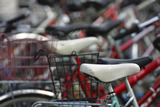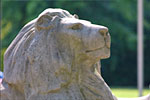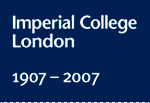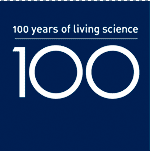Professor Michael Streat
(Chemical Engineering, PhD student 1958-61; staff 1961-89)
shares his memories of importing dangerous cargo to Imperial.
I arrived with great excitement to embark on PhD studies in the Department of Chemical Engineering and Chemical Technology in October 1958 as the first research student to work in the field of nuclear technology with Mr Geoffrey Hall (later Professor G R Hall) as my supervisor. He asked me to study the effect of high intensity gamma radiation on chemical reagents used in the processing of irradiated nuclear fuel. My first task was to design, build and commission a high intensity gamma radiation source that was to be installed into a converted disused dynamo hall that had once served the old Commonwealth Institute buildings in Imperial Institute Road. This was a daunting task for a fresh chemical engineering graduate. It involved the complete design of a massive concrete shielded labyrinth cell and remotely controlled handling gear to expose a high specific activity cobalt-60 isotope for irradiation experiments and subsequently shield the source within a massive concrete roof when not in use. The design of the facility took me almost two years of work and eventually we were ready to install the cobalt-60 isotope in early 1960. The isotope was procured in Canada and shipped to the College in a 5-ton lead container.
 I vividly remember the day that the isotope arrived on site. Pickfords had a crew of men on standby ready to manhandle the lead container into the irradiation cell via the entrance labyrinth corridor. However, the lead container was customs sealed and I recall the customs official arriving on his bicycle, pipe in mouth, to remove the customs seal. He asked us what was in the lead container and we explained that it was a high intensity cobalt-60 isotope. His face turned as white as a sheet and he promptly handed us his snippers, leapt back on his bike and pedalled off site as fast as he could saying that he wanted nothing to do with this dangerous cargo. Of course, we removed the seal and safely installed the isotope. What a hoot-can you imagine the contraband we could have imported in that container!
I vividly remember the day that the isotope arrived on site. Pickfords had a crew of men on standby ready to manhandle the lead container into the irradiation cell via the entrance labyrinth corridor. However, the lead container was customs sealed and I recall the customs official arriving on his bicycle, pipe in mouth, to remove the customs seal. He asked us what was in the lead container and we explained that it was a high intensity cobalt-60 isotope. His face turned as white as a sheet and he promptly handed us his snippers, leapt back on his bike and pedalled off site as fast as he could saying that he wanted nothing to do with this dangerous cargo. Of course, we removed the seal and safely installed the isotope. What a hoot-can you imagine the contraband we could have imported in that container!
Photo above right: Bicyles
This "home-made" cobalt source was the forerunner of a much more sophisticated commercially designed facility incorporated into the ACE extension of the Department of Chemical Engineering and Chemical Technology in the mid 1960s and represented a major enabling facility for the many years of pioneering nuclear chemical technology research at Imperial College in subsequent years.
© 2007 Imperial College London

Through the first decade of the twenty-first century the campaign seeks to philanthropically raise £207 million from Imperial’s alumni, staff and friends, and donations from charitable foundations and industry.
Where your support can make a differenceGive now

Imperial’s Centenary Year provides an opportunity to recognise and celebrate members of the Imperial community.
View staff and student portraits
